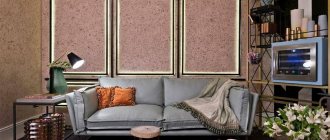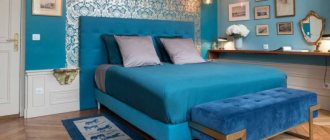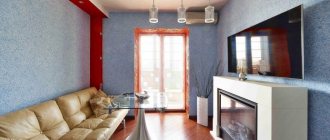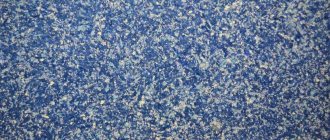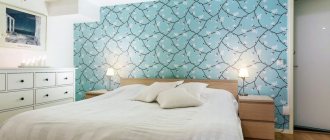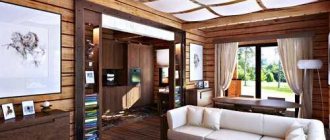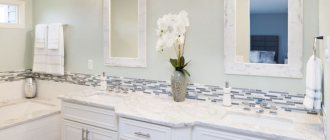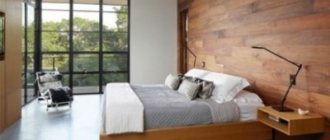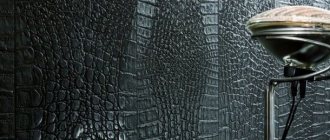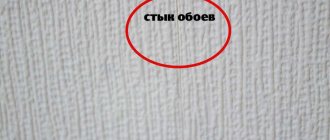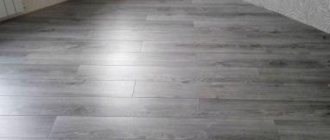Added by: Oksana February 15
Tell me, do you have a habit, before going to a store or market for shopping, to first make a list of everything you need to buy? If you have such a habit, then we can only be happy for you! No such habit? Badly. Very bad. Making lists is a very useful activity. The list saves a lot of problems. If you have a list, you will never buy too much, and you will never forget to buy what you need. By the way, going to specialized hardware stores is no exception to the general rules.
Imagine that you want to update the wallpaper in your apartment. And you decided not to involve professionals for this matter, but to do everything yourself. And what do you need to buy in the store? You will need, in fact, the wallpaper itself. 99% of people will answer this way. In fact, you will need to purchase much more . In addition to the wallpaper itself, you will also need glue, several brushes and rollers, various skirting boards and edgings. You will also need a spatula (or even several), a plumb bob, a utility knife, good scissors, a tape measure and a large ruler. Naturally, before including these things on the list, you need to check their availability at home. After all, it is quite possible that you already have most of all of the above. Only you don't remember them. So, the test is over. Now we take the list and go to the store. Believe me from personal experience, you will have to add a few more items to the list. For what? Now you will understand.
- 2 Color, pattern, texture
- 3 Wallpaper thickness
- 4 Width of rolls and their number
What should everyone know before going to the store to buy wallpaper?
And you need to know a lot. And the first thing you should decide on is the material.
First of all, the type of wallpaper you want to paste. How different types of wallpaper differ from each other has already been written a lot. They can differ in their front side (fabric, paper, etc.) or the back side (non-woven fabric, paper, etc.). A lot depends on what material the wallpaper for your home will be made from. First of all, the appearance of the room. Then the methods of cleaning the walls, the ease of gluing the wallpaper on the walls, how easy it will be to remove it from the wall the next time you glue the wallpaper, the service life of the wallpaper, etc. depend. The price of wallpaper is determined as everywhere else - the better all these characteristics, the higher the price. If you think that it doesn’t matter how much the material costs, it is important that it is of high quality and lasts a long time, then you should choose non-woven wallpaper.
Gluing non-woven wallpaper (and then removing it during the next renovation) is much easier than paper wallpaper. They are distinguished by high strength and, naturally, durability. If you decide to glue wallpaper in the apartment you rent, and you are not at all interested in the fact that you will ever have to remove it, then paper wallpaper is suitable for you. As they say, cheap and cheerful. Such wallpapers have the only advantage - they are much cheaper than any other wallpaper! Have you decided what wallpaper you need? So write to the list. Then it will be much easier.
What types of wallpaper are there for walls?
The bulk of the wallpaper is multi-layered, has a base made of paper or non-woven material for better adhesion to the walls and a top coating that is decorative and durable.
Paper
Paper wallpaper is a classic design for residential walls. Simplex, or single-layer, paper sheets, thin to the touch, allow air to pass through well. Two-layer, duplex are more dense and durable.
Composed of wood shavings , coarse fibers do not allow sunlight to pass through. The choice of paper wallpaper is unlimited. Smooth and textured, for painting and impregnation, plain and multi-colored, if treated with care, paper coverings will retain color and freshness for a long time and at a low cost.
The disadvantages include:
- sunburn;
- wear and tear around switches and sockets;
- low strength;
- difficulty at work.
Important! Contact of paper with water must be avoided. This type of finishing is not used in wet rooms, bathrooms, kitchens.
Non-woven
Non-woven fabric is made from pressed paper and fabric fibers using a binder component.
Dense panels perfectly hide wall defects, are beautiful, do not fade in the sun and do not accumulate dust.
Moisture resistance helps to maintain a neat appearance, ease of sticker - saving on payments to finishers.
Glue is applied to the wall, the panel is pressed dry. Non-woven fabric does not tear, does not get wet, does not shrink.
The walls acquire additional sound insulation.
There are three types of non-woven wallpaper:
- for painting;
- on a non-woven base with various coatings;
- Full non-woven multi-layer panels.
Vinyl
Double-layer vinyl wallpaper. The bottom layer, the base, is made of non-woven fabric or paper, with a polyvinyl chloride coating with a pattern applied on top. Polyvinyl chloride, or vinyl, creates a durable, stain-resistant layer. Such coatings retain the integrity and freshness of paints for up to 10 years , are easy to wash and clean, heavy varieties perfectly hide uneven walls.
There are only five main types of material, the remaining subtypes fall into these categories:
- Foamed vinyl . The wallpaper is voluminous, textured, often with the addition of glitter. Varieties for painting can easily change color using water-based painting; you can change the tone until the structure is smoothed.
- Hot stamping . Heavy and compact vinyl fall into this subgroup. Heavy vinyl will cover all the imperfections of the walls, but pasting requires some skill. Compact vinyl is a real designer's dream; it reliably imitates brick, wood, and textiles.
- Silkscreen printing . Silk threads on the surface give a noble luxurious shine. Rich colors last for 8-10 years, the wallpaper is wear-resistant and durable.
- Washable or polyfoam. The surface is smooth or foamed, intended for kitchens, children's rooms, and designed for contact with water.
- Hard vinyl . Evaporated vinyl is considered an environmentally friendly hypoallergenic material, certified for children's rooms.
When choosing high-quality vinyl coverings, pay attention to the smell. The roll must be dry to the touch, the smell of acetone is not allowed.
Acrylic
The top layer of acrylic wallpaper is applied by spot spraying. Acrylic is a polymer found in many finishing materials and paints.
The bottom layer is made of paper. Spot application imparts breathability, the coating is ventilated and “breathes”.
The polymer is applied to a paper or non-woven base.
Separately, “ eco-acrylic ” is distinguished. During production, a polymer is diluted in water, its composition is similar to medical acrylic, and it is more environmentally friendly than regular acrylic.
Such coatings are four-layer. Acrylic is applied to the base, usually paper, then two layers of “eco-acrylic”.
We recommend: Why are foam block sizes best suited for building a private home? Is it possible to make it yourself?
The technology makes it possible to obtain a durable, vapor-permeable coating ; the acrylic composition prevents bacteria and mold from multiplying.
Natural
Wallpaper with a base of unbleached paper on the front side is decorated with a weave of natural fibers with natural components - bamboo, leaves, plants.
All the fresh beauty of nature is displayed in the interior of the house. Such coatings are often made by hand and are unique in design. Irregularities in the walls are hidden, plant materials provide additional thermal insulation and sound insulation to the room.
The panels are glued like regular paper wallpaper, but have some peculiarities: they are difficult to cut and form visible seams . Natural materials are indispensable for allergy sufferers and ideal for children's decor.
Attention! Natural coatings absorb odors and are not suitable for kitchen decoration.
Glass wallpaper
A rolled covering made of impregnated fiberglass , which has a clearly defined structure, is called glass wallpaper or fiberglass wallpaper.
The woven fabric is impregnated, giving stability with special compounds.
After gluing, the surface is painted with water-based paints or latex paints.
You can repaint the walls up to 20 times.
Glass fiber for weaving is made from natural raw materials: limestone, clay, quartz sand.
Modified starch is used for impregnation. The service life of the finish is up to 30 years , the appearance of mold and bacteria is excluded. Wallpaper is durable and does not accumulate static electricity and dust. An important property is fire resistance .
Fiberglass fabric does not support combustion and does not ignite, which is confirmed by certificates. Fiberglass wallpaper is not damaged by pets.
Textile
Fabric panels are soft and pleasant to the touch , look warm and noble. According to production technology, coatings are divided into wallpaper based on threads or canvas. The installation of seamless fabric is interesting.
Thick fabric is used to decorate the entire perimeter of the room, creating a single seam. Window and door openings are cut after the sticker is applied. Fabric coverings do not interfere with air exchange; the linen base imparts antiseptic properties. Textiles reflect the impeccable taste of the owner.
Note! The fabric on the walls should not be washed; stains and dirt should be avoided.
Wallpaper is divided according to the source material into types:
- jute;
- silk;
- linen;
- velor;
- felt;
- textile on a synthetic basis.
The synthetic base in fabric wallpaper is foam rubber . The foam base is difficult to install, but it insulates and isolates surfaces from extraneous noise.
Metal
For good adhesion to the base, the base of metal wallpaper is made from non-woven fabric, paper, vinyl . The top layer is made of aluminum foil . The foil thickness is only 0.0165 mm.
A translucent coating is applied on top of the aluminum or artificially oxidized, then a pattern is applied using chemical liquids and current-insulating paints and varnishes. The treatment protects the foil layer from corrosion and reduces the electrical conductivity of the metal.
Metallized coatings according to decoration method:
- embossed;
- blackened;
- patinated;
- hand painted;
- chemically pickled.
Metal coatings are universal, fit into all fashion trends, add weight and solidity or, conversely, a bright modern accent.
Liquid
Liquid wallpaper is called silk plaster .
The environmentally friendly material consists entirely of natural components: cellulose and silk fibers .
Dye and additives impart decorative properties; wallpaper glue serves as a binder.
The mixture is diluted with glue, kept in a container and applied to the walls according to the principle of a plaster mixture, after drying, forming a structural layer that is soft to the touch.
Silk plaster can withstand changes in temperature and humidity and does not fade in direct sunlight. Damaged or contaminated areas can be repaired without visible marks.
Photo wallpaper
According to the material, photo wallpapers are vinyl on paper and non-woven base.
Textured or smooth, with different levels of gloss after applying the pattern using photo printing, they are glued to the walls in the form of panels. The coating perfectly hides wall imperfections and is washable without losing its brightness in the sun.
Scenes and landscapes, outlines of skyscrapers against the background of the night sky, city views have long become classics. 3D wallpapers look non-standard and fresh , creating futuristic combinations of design elements and the interior of the room.
Important! Photo wallpaper is chosen as wide as possible, avoiding joints as much as possible.
Cork
Wall finishing with rolled cork materials meets all environmental requirements.
Cork is the name given to the bark of the cork oak tree , which is capable of restoring its shape after deformation.
We recommend: Foam insulation for use in the construction of private houses. Composition, types and characteristics of polystyrene foam
Cork coverings insulate rooms, reduce extraneous noise, and naturally regulate the level of humidity in a living space.
Natural wood grain is combined with flooring and furniture, bringing natural environmental notes to the interior.
You can use cork flooring in bathrooms and kitchens. Having antibacterial properties, cork does not cause an allergic reaction.
Cork oak bark does not support combustion and has a high level of fire resistance.
Quartz
The front layer of quartz wallpaper is made of quartz sand with the addition of granite or vermiculite chips , shell rock, and mica. The base is made of paper or non-woven fabric. The dense grain structure visually evens out the surface of the walls, adding aesthetics to the interior.
The wallpaper is heavy, durable, the seams are not visible after sticking. When repairing, the canvas can be easily repainted with latex paint. The coating is impact-resistant and difficult to be scratched by pets. All components are hypoallergenic and non-toxic, creating an ideal living environment.
Quartz wallpaper is cleaned with brushes, wet wipes and vacuum cleaners, avoiding prolonged contact with water and active chemical detergent additives.
Velor
Velor wallpaper is easily recognizable by its special, iridescent velvety texture , pleasant to the touch.
The decorative type of coating does not require additional decoration with paintings, it looks expensive and stylish.
An important performance quality of velor wallpaper is its ability to absorb sounds .
Bedrooms and lounges decorated with velor are distinguished by an increased level of silence and comfort.
Wallpaper does not fade in the sun, does not accumulate static electricity and dust. Velor pile does not tolerate contact with water; maintenance is only possible by dry cleaning.
It is better to entrust the gluing of velor coverings to professional finishers; accidentally formed creases cannot be smoothed out.
For information: Types, sizes and applications of fiberboard in private construction
Color, pattern, texture
Yes, you should decide on the pattern, color and texture of the wallpaper at home. If you know how, then draw it. If you don’t know how, then express it in words. Don't forget that wallpaper is part of the decoration. And they should not be separated from the general interior. After all, they are directly involved in the construction of the interior, and should be combined not only with the view from the window and your mood, but also with furniture, curtains, etc.
It makes no sense to advise anything here. Everyone chooses as they see fit. Some people choose according to Feng Shui, others listen to the opinions of scientists and their works on how color affects the human condition. These are just recommendations. And you yourself make the decision whether to follow these recommendations or not. And once you buy poisonous green wallpaper, you will see from your own experience that this color is not suitable for the bedroom.
Wallpaper and wall coverings, their pros and cons
At the moment, the building materials market offers a large selection of wallpaper and all kinds of wall coverings. Let's discuss the most popular ones.
Printed wallpaper
Patterns are applied to wallpaper manually or by machine. Machine-made wallpaper takes up the lion's share of all production. Prices can be very varied, it all depends on the quality of the paper material and the amount of paint used.
Very often, the front of the paper is treated with a transparent plastic film, resulting in wallpaper for walls that can be cleaned. However, they do not have the same density as vinyl. Wallpaper, which is made by hand, is much more expensive, but has an inimitable design and excellent coloring. It is not recommended to wash them.
Vinyl wallpapers
The decorative pattern is applied to a fairly thin layer of vinyl that covers the front of the paper. Such wallpaper is abrasion resistant and durable. This type of covering for your walls can be washed with a rag or scrubbed with a brush. Some types are self-adhesive. This type of self-adhesive can be with large or small patterns, plain or striped.
It all depends only on your imagination. Vinyl wallpaper is much easier to remove from the wall surface because you can remove the vinyl film first. Sculptural or textured vinyl wallpapers undergo heat treatment during the production process. As a result, large or small relief patterns appear on the paper.
Embossed wallpaper
This type of wall covering has excellent insulating qualities, so they are recommended for finishing rooms where there is high humidity. Embossed wallpaper with a three-dimensional pattern lasts quite a long time and perfectly hides all kinds of flaws on the surface of the walls.
Decorative wall coverings
Decorative borders for wallpaper come in all sorts of designs. They act as a coordinated part of the design of your room. By using different colors and border patterns, you can change the proportions of the room. There are some factors you should take into account that will help you carry out quality repairs.
The condition of your walls
If the walls are uneven, you should not choose thin wallpaper that consists only of paper. They can only highlight the flaws of the room. In heavily used rooms, you should use wallpaper that can be peeled and washed. The most suitable option in this situation is vinyl wallpaper. For frequent repairs, it is necessary to select a type of coating that can be easily removed from the surface. Choose single-layer or printed wallpaper.
10/28/2012 In contact Twitter Facebook Odnoklassniki My world Livejournal
Wallpaper thickness
Wallpaper is available in different thicknesses. And you should know exactly what is more important to you at the moment - saving money or simplifying your life. The cost of thin wallpaper is lower than thick wallpaper. But gluing them is much more difficult. And the preparation of the wall will have to be done very carefully. The cost of thick wallpaper is higher. But there are much fewer problems with them. They also perfectly hide unevenness on the walls.
Yes, this is, of course, a personal opinion, but I advise you not to purchase washable wallpaper. Of course, if it’s not glass wallpaper, which has recently appeared on sale. Fiberglass wallpapers are very expensive. But if wet cleaning is a matter of principle, then it’s better to buy them. Ordinary washable wallpaper has a specific smell and releases a lot of aggressive chemicals into the air.
Roll width and quantity
The calculation here is simple: the wider the wallpaper, the fewer rolls you will have to buy . If you have never covered walls with wallpaper, then it is better to take narrow wallpaper. They are easier to work with. Professionals, of course, prefer wide wallpapers - fewer movements are made and the work is done 2 times faster.
The number of rolls is easy to calculate. Take a tape measure and measure the area of the walls. Don’t forget to subtract doors and windows from the total area. Rolls of wallpaper can be 10 or 18 meters long. Knowing the width of the roll, it is very easy to calculate the area of the roll. Divide the area of the walls by the area of the roll and determine the number of rolls. But there is one subtlety here. Integer numbers are rarely obtained. As a rule, numbers are fractions. Always round up. And add one spare roll. In case you need to do minor repairs. After all, wallpaper of this shade may not be found in the future.
- Author: Oksana
Rate this article:
- 5
- 4
- 3
- 2
- 1
(1 vote, average: 5 out of 5)
Share with your friends!
